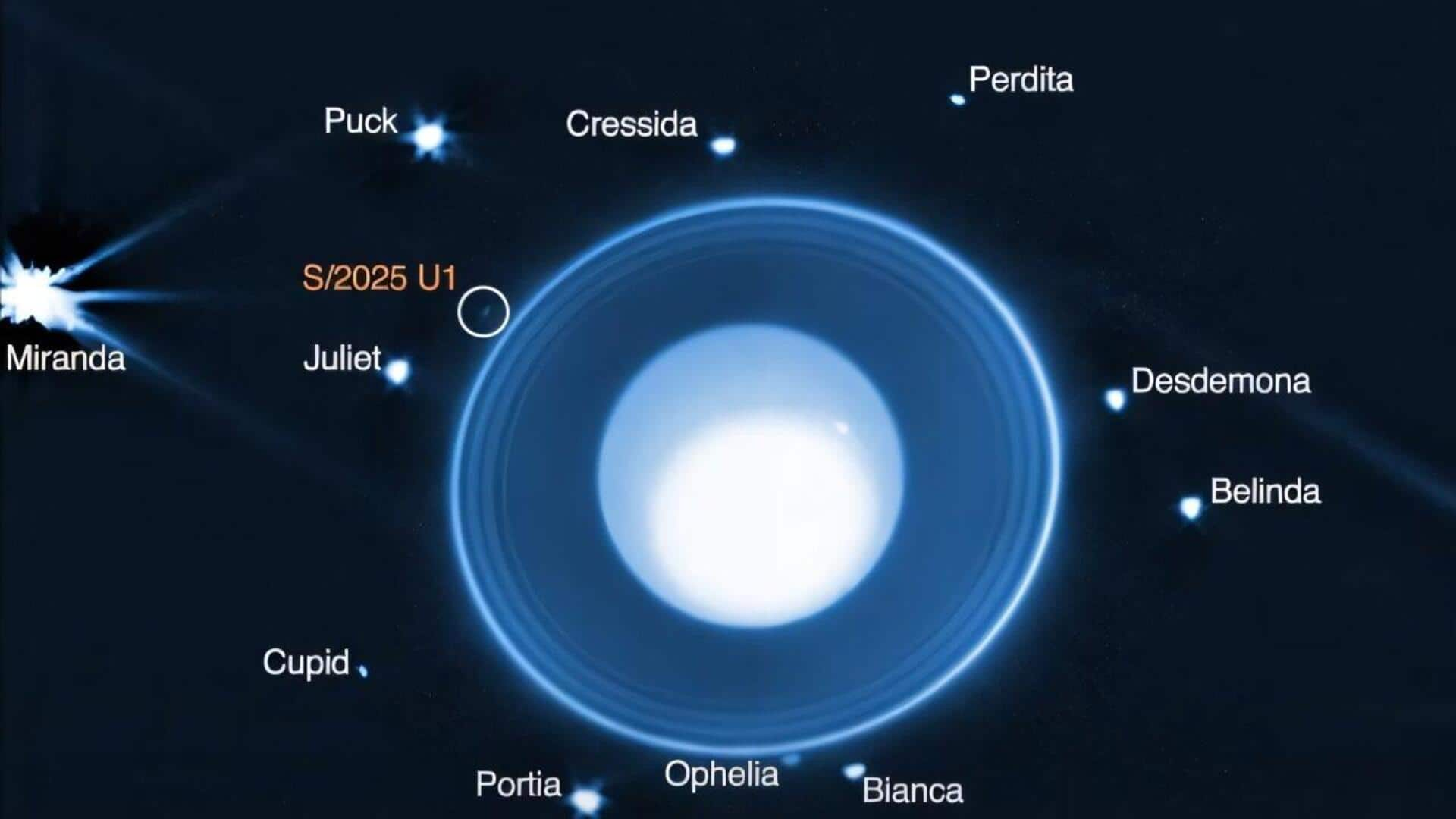
NASA's Webb telescope finds a tiny new moon orbiting Uranus
What's the story
NASA's James Webb Space Telescope has discovered a new moon orbiting the planet Uranus. The discovery was made by a team from the Southwest Research Institute (SwRI) during an observation on February 2, 2025. The newly discovered celestial body, provisionally designated as S/2025 U1, measures just 9.6km in diameter. An official name for the moon will be approved by the International Astronomical Union (IAU) in due course.
Location
29 moons now known to orbit Uranus
The discovery of S/2025 U1 brings the total number of known moons orbiting Uranus to 29. The tiny body is located about 56,327km from the center of Uranus and orbits on a nearly circular path. This suggests it may have formed in its current position. It travels alongside several other small satellites that lie within the orbits of Uranus's largest moons, namely Miranda, Ariel, Umbriel, Oberon, and Titania.
Technological prowess
Webb's capabilities
The discovery of S/2025 U1 showcases the advanced capabilities of the JWST. A team from SwRI took 10 different 40-minute exposures of Uranus using Webb's Near-Infrared Camera (NIRCam) to find the small moon. "Through this and other programs, Webb is providing a new eye on the outer solar system," said Maryame El Moutamid, a lead scientist at SwRI.
Moon system
Uranus has a 'chaotic history'
The discovery of S/2025 U1 adds another layer to the intricate system of small moons orbiting inward of the largest ones. "No other planet has as many small inner moons as Uranus, and their complex inter-relationships with the rings hint at a chaotic history that blurs the boundary between a ring system and a system of moons," said Matthew Tiscareno from SETI Institute.
Future discoveries
More moons may be lurking
The discovery of S/2025 U1 also hints at the possibility of more such celestial bodies waiting to be discovered. "Moreover, the new moon is smaller and much fainter than the smallest of the previously known inner moons, making it likely that even more complexity remains to be discovered," Tiscareno added.